Discover pristine coral reefs while supporting local marine conservation in the Maldives, trek with indigenous guides through Ecuador’s Amazon rainforest, or participate in elephant rehabilitation at ethical sanctuaries in Thailand – eco-tourism transforms ordinary vacations into meaningful adventures that protect our planet’s most precious environments.
Today’s conscious travelers seek more than just stunning destinations; they want to make a positive impact. From solar-powered lodges in Costa Rica’s cloud forests to community-led wildlife tours in Kenya’s Maasai Mara, eco-tourism initiatives worldwide demonstrate how sustainable travel can benefit both local communities and natural ecosystems.
These carefully curated experiences not only minimize environmental impact but also educate visitors about conservation, support indigenous cultures, and create economic incentives for preserving wild spaces. Whether tracking mountain gorillas in Rwanda or staying at off-grid ecolodges in New Zealand’s untouched wilderness, each mindful journey helps weave a global network of sustainable tourism that safeguards our natural heritage for future generations.
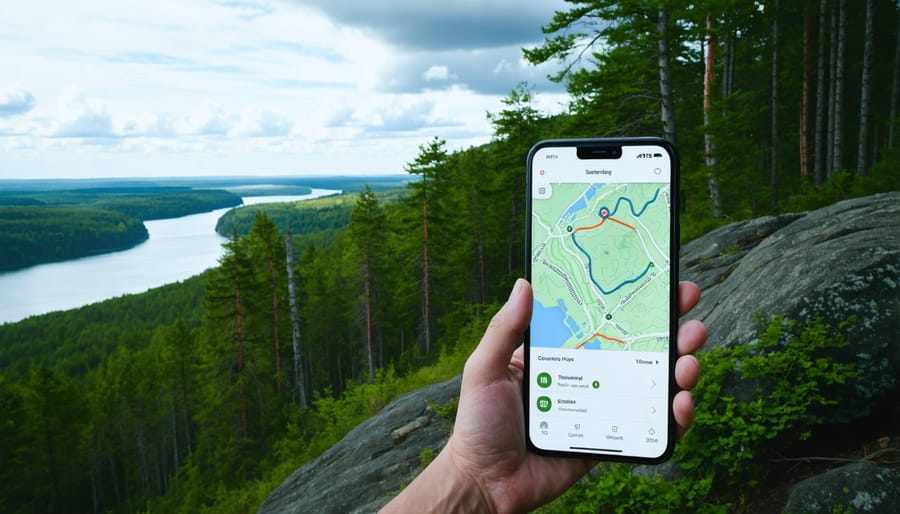
Smart Trail Planning for Frontenac Provincial Park
Virtual Trail Scout
Ever wondered how to find the perfect trail that matches your hiking abilities? Our Virtual Trail Scout is changing the game for eco-tourists in Ontario’s parks. This smart AI system analyzes thousands of trail reports, weather conditions, and real-time user feedback to help you make informed decisions about your outdoor adventures.
The system works like your personal hiking buddy, taking into account factors like your fitness level, hiking experience, and time constraints. It even considers seasonal changes – suggesting alternate routes during wet seasons or warning about challenging sections that might be icy in winter.
What’s really cool is how it helps spread out visitor traffic across different trails, reducing the environmental impact on popular paths. By suggesting lesser-known but equally beautiful alternatives, it helps preserve our natural spaces while giving you a more peaceful experience.
Pro tip: The AI updates its recommendations based on recent wildlife sightings, so you might get lucky and spot some local residents while keeping a safe distance. It’s like having a naturalist guide in your pocket, helping you explore responsibly and confidently.
Eco-Impact Calculator
Ever wondered about the environmental footprint of your hiking adventures? Thanks to innovative AI technology, you can now measure and minimize your impact on Ontario’s beautiful trails. The Eco-Impact Calculator uses smart algorithms to analyze various factors like group size, trail conditions, and seasonal wildlife patterns to help you make environmentally conscious decisions.
Simply input your planned hiking details into the app, and it’ll calculate your potential environmental impact score. It considers things like vegetation trampling risk, wildlife disturbance probability, and even estimates your carbon footprint getting to and from the trail. The calculator then provides personalized suggestions to reduce your impact, such as alternative trail routes during sensitive breeding seasons or recommended times to avoid peak wildlife activity.
What I love most about this tool is how it helps you become a more mindful hiker. It might suggest packing specific eco-friendly gear, recommend better times for your hike, or even provide real-time updates about trail conditions. Plus, it keeps track of your “green hiking score” over time, turning environmental consciousness into a fun challenge for the whole family!
Wildlife Watching Made Smart
Species Recognition Apps
Today’s smartphones are becoming powerful allies in responsible wildlife observation in Ontario, thanks to innovative species recognition apps. Tools like Seek by iNaturalist and Merlin Bird ID have transformed how we identify and learn about local flora and fauna during our outdoor adventures.
These AI-powered apps work like nature guides in your pocket. Simply snap a photo of a plant, bird, or insect, and the app will help you identify it while providing fascinating facts about the species. What’s particularly great is that many of these apps contribute to citizen science by sharing anonymous observation data with researchers, helping track species populations and migration patterns.
Pro tip: Before heading out, download the app’s database for offline use – many of our beautiful trails don’t have reliable cell service. Remember to maintain a safe distance from wildlife when using these apps, and never disturb animals for the sake of a photo. These tools are meant to enhance our connection with nature while respecting the creatures we’re fortunate enough to observe.
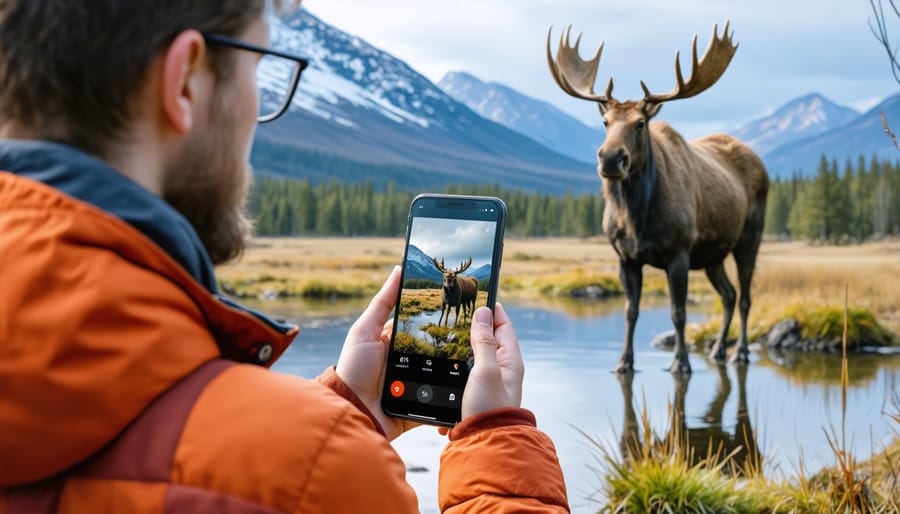
Best Viewing Times Predictor
Ever wondered when’s the best time to spot a moose at Algonquin Park or catch the spectacular salmon run? Thanks to modern AI technology, predicting wildlife viewing times has become amazingly accurate. These smart systems analyze years of wildlife movement patterns, weather data, and visitor reports to suggest the perfect timing for your nature encounters.
The AI takes into account factors like seasonal migrations, mating seasons, and even the moon phase to recommend optimal viewing windows. For example, if you’re hoping to see black bears, the system might suggest early morning visits during berry season in late summer. For bird enthusiasts, it can predict peak migration periods through Ontario’s various wildlife corridors.
What makes these predictors truly special is their ability to learn from real-time data. When visitors report wildlife sightings through park apps, the AI adjusts its predictions accordingly. It’s like having a local nature guide in your pocket! Plus, these tools help reduce wildlife disturbance by spreading visitors across different time slots, making your eco-tourism experience both more successful and more responsible.
Remember to always respect wildlife viewing guidelines and maintain safe distances, even when the AI suggests prime viewing times.
Sustainable Campsite Selection
Site Impact Analyzer
Our innovative Site Impact Analyzer uses advanced AI technology to help you make informed decisions about your camping locations while prioritizing environmental conservation. This smart tool evaluates various factors including soil composition, wildlife patterns, and vegetation density to recommend the most sustainable spots for eco-friendly camping.
Simply input your preferred camping area, and the analyzer will generate a detailed sustainability score based on real-time environmental data. It considers factors like ground resilience, proximity to sensitive ecosystems, and seasonal wildlife movements. The tool also provides personalized recommendations for minimizing your environmental footprint, such as suggested campsite placement and optimal times to visit.
What makes this analyzer particularly valuable is its ability to predict potential environmental impacts before they occur. It uses historical data and current conditions to forecast how your camping activities might affect the local ecosystem. This helps you make responsible choices that protect Ontario’s beautiful wilderness while still enjoying your outdoor adventure.
The analyzer also offers practical tips for reducing your impact, from proper waste management techniques to sustainable firewood collection practices, ensuring your camping experience aligns with conservation goals.
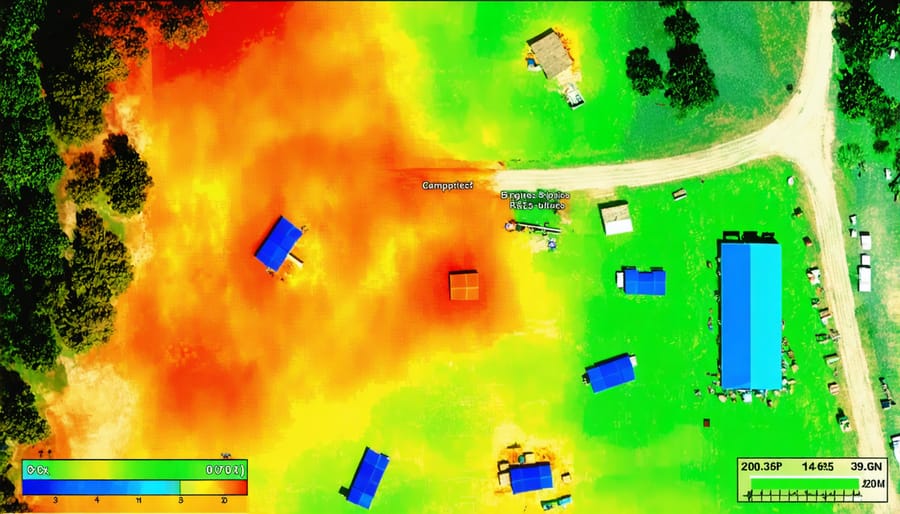
Crowd Distribution Tools
Ever wondered how some of Ontario’s most popular eco-tourism spots stay peaceful and uncrowded, even during peak season? The secret lies in smart AI-powered crowd management tools that parks and conservation areas are increasingly adopting.
These clever systems use real-time data from trail sensors and visitor check-ins to predict busy periods and suggest alternative times or locations. For instance, at Algonquin Park, visitors can now check an app that shows current trail capacity and recommends less crowded routes for a more serene experience.
Some parks have introduced virtual queuing systems, allowing you to reserve specific time slots for popular attractions or viewpoints. This means you can enjoy a peaceful sunrise at the Lookout Trail without bumping elbows with dozens of other photographers!
My favorite feature is the smart notification system that sends alerts when certain areas become less crowded. Last summer, I received a notification that the busy Crack Trail at Killarney had cleared up in the late afternoon – perfect timing for a quiet hike!
These tools don’t just improve visitor experience; they help protect sensitive ecosystems by preventing overuse and giving natural areas time to recover. It’s a win-win for both nature enthusiasts and the environment!
Local Conservation Support
Volunteer Matching System
Looking to make a real difference during your Ontario adventure? The new AI-powered volunteer matching system is revolutionizing how travelers connect with local conservation projects. This innovative platform analyzes your interests, skills, and travel dates to pair you with meaningful environmental initiatives throughout the province.
Whether you’re passionate about tree planting in Algonquin Park, helping with wildlife surveys in Bruce Peninsula, or participating in shoreline cleanups along the Great Lakes, the system suggests perfect matches based on your availability and expertise. It even considers factors like your physical capabilities and preferred activity levels to ensure a fulfilling experience.
The best part? You’ll receive real-time updates about project impacts, connecting with other eco-minded volunteers and tracking your contributions to Ontario’s conservation efforts. Many travelers report that these matched volunteer experiences become the highlight of their trips, offering unique insights into local ecosystems while making a tangible difference in preserving our natural heritage.
Environmental Monitoring Apps
Ever wondered how you can contribute to conservation while exploring Ontario’s wilderness? Several fantastic citizen science apps make it easy to be part of important environmental research during your eco-adventures. iNaturalist is a favorite among nature enthusiasts, letting you snap photos of plants and wildlife you encounter, which experts then help identify. Your observations become valuable data for tracking species distribution and habitat health.
Another useful tool is eBird, perfect for birding enthusiasts visiting our provincial parks. By logging the birds you spot, you’re helping scientists monitor migration patterns and population changes. For water lovers, Water Rangers provides a platform to record water quality observations at lakes and rivers across Ontario.
Don’t forget to download Ontario Parks’ own mobile app before your visit. It includes features for reporting wildlife sightings and tracking invasive species, making your eco-tourism experience both fun and meaningful. These apps turn every hike into an opportunity to contribute to environmental conservation!
As we’ve explored throughout this article, AI-powered eco-tourism tools are revolutionizing the way we experience and protect Ontario’s natural wonders. These innovative technologies help us plan greener trips, discover hidden gems, and minimize our environmental impact while maximizing our outdoor adventures.
By using these smart tools for trail planning, wildlife spotting, and crowd management, we’re not just making our travels more enjoyable – we’re actively contributing to conservation efforts. The combination of artificial intelligence and eco-tourism creates a perfect balance between exploration and preservation, ensuring that future generations can enjoy these spectacular landscapes just as we do today.
Remember, whether you’re planning a weekend hiking trip in Algonquin Park or a week-long adventure in the Bruce Peninsula, these AI tools are here to help you make more sustainable choices. Let’s embrace these technological advances while keeping our commitment to responsible travel at heart. After all, being a mindful explorer isn’t just about where we go – it’s about how we choose to get there and the footprints we leave behind.
So why not give these eco-friendly planning tools a try on your next outdoor adventure? Your journey will be smoother, greener, and more meaningful than ever before.









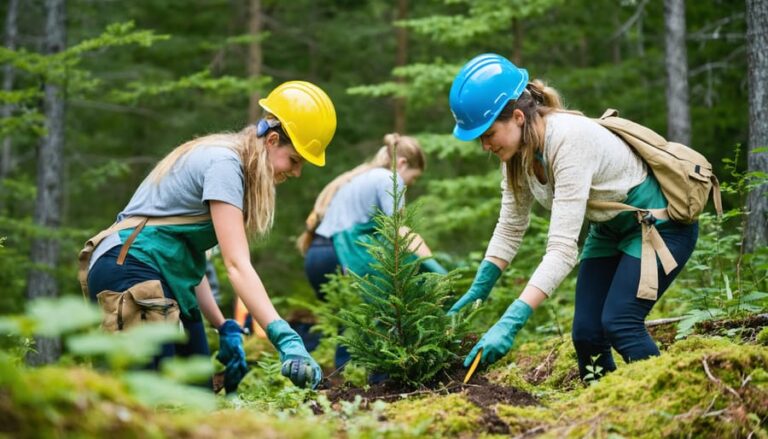
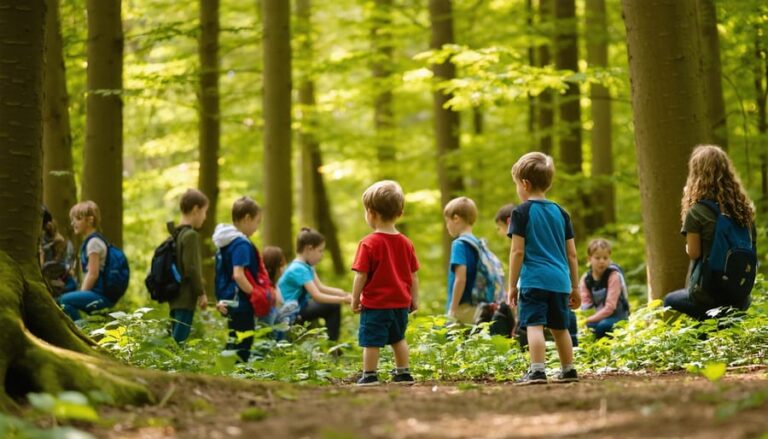

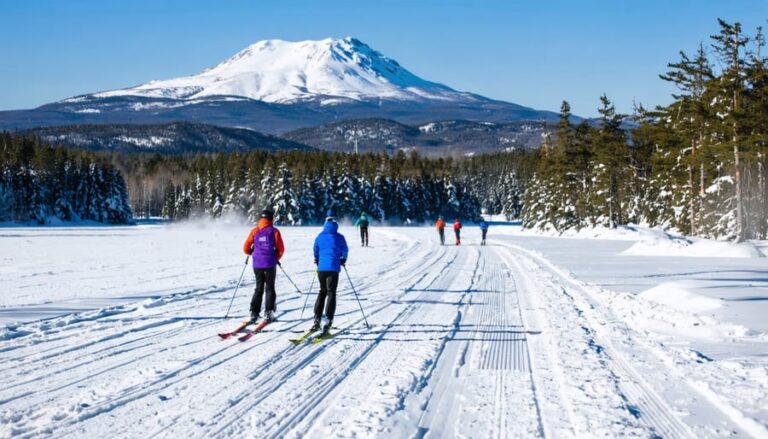

+ There are no comments
Add yours